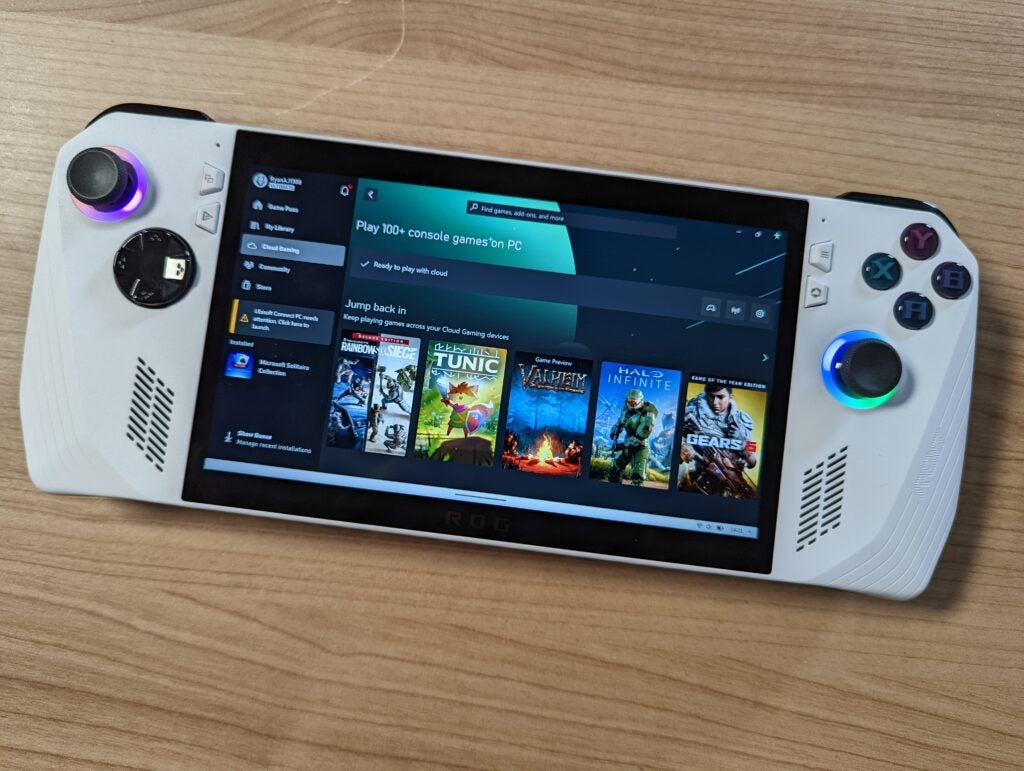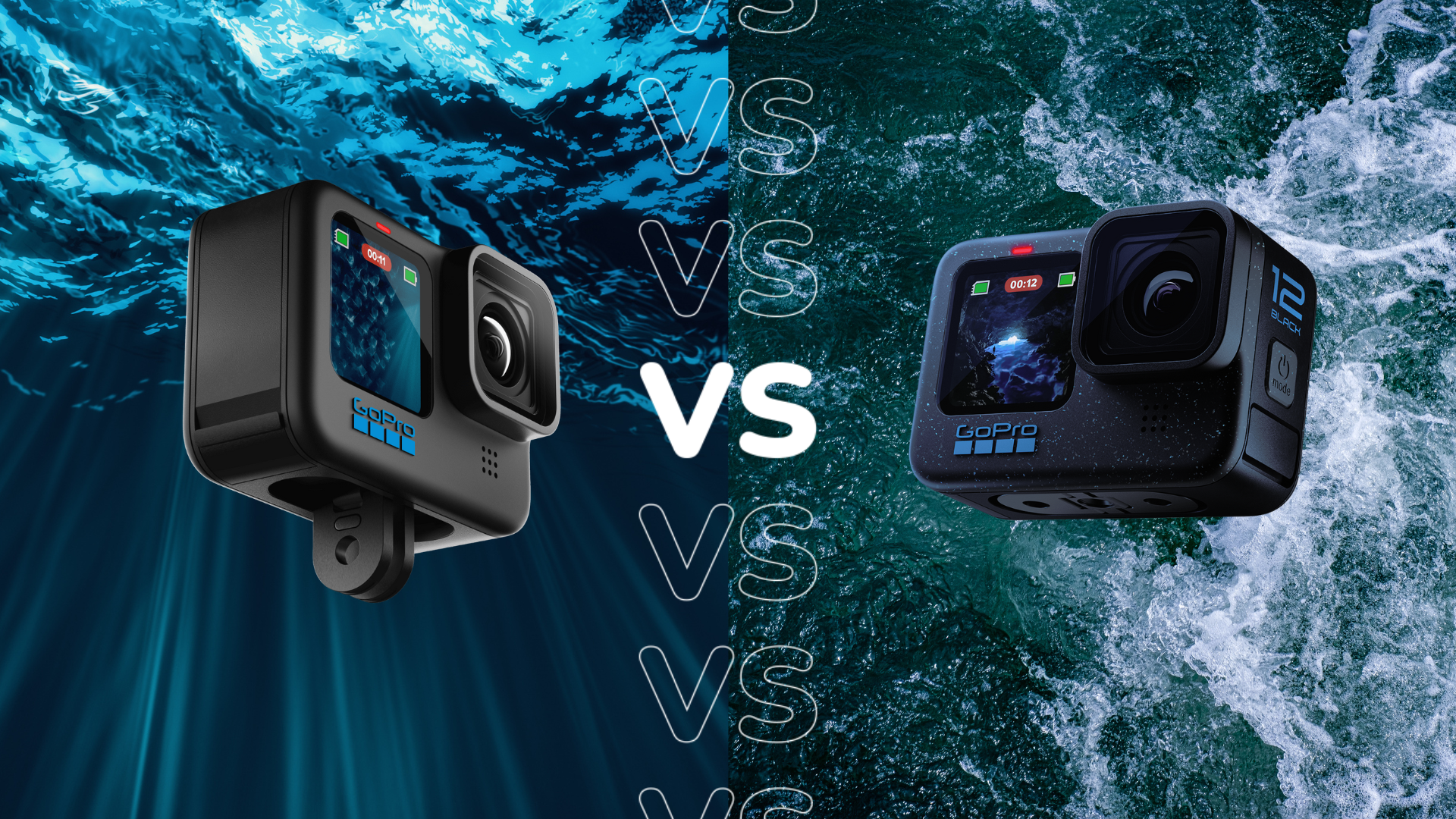MSI Claw vs Asus ROG Ally: What’s the difference?

MSI has revealed its Steam Deck competitor in the form of the MSI Claw, a 7.4-inch handheld gaming device that lets you play your favourite PC games while away from home.
The question is, how does it compare to one of the most capable gaming handhelds on the market, the Asus ROG Ally?
While the two may share key similarities in the design and display departments, there are key differences between the two handhelds that’ll push you towards one or the other. We’ve only managed to go hands-on with the MSI Claw so far, but we’ve spent plenty of time with the ROG Ally, so we’re focusing mainly on specs here.
We’ll be sure to update this once we spend some time with the MSI Claw, so head back soon for more.
The MSI Claw and ROG Ally look oddly similar
Despite being produced by two totally independent companies, the MSI Claw and ROG Ally look oddly similar.
Both sport the same size display at 7.4 inches, the same 120Hz refresh rate and Full HD (1920 x 1080) IPS LCD screen tech. MSI hasn’t confirmed elements like maximum brightness, but given how similar the screens are, we wouldn’t be surprised if it matches the ROG Ally’s 500nits maximum brightness.
It’s not just the overall design and screens that match up; even smaller elements, like the button placement of the two gaming handhelds, seem to be placed near-identically. That’s pretty handy for consumers, as it means that regardless of the handheld you opt for, you’ll be getting a largely consistent experience.
Besides, we praised the ROG Ally for its stylish design compared to the relatively old-school-looking Steam Deck and found that it was extremely comfortable to use over longer periods, which bodes well for the MSI Claw.

iPhone 13 Pro Max Bargain
Now’s your chance to get one of the best iPhones in recent years on the cheap, thanks to this incredible offer from Giffgaff.
- Giffgaff
- ‘Like new’ refurbished
- Just £639
Intel vs AMD
They might look pretty similar on the surface, but there’s a key difference between the MSI Claw and ROG Ally: the processors.
That’s because the new MSI Claw features Intel processors, specifically the Intel Core Ultra 5 or Ultra 7 depending on the variant you opt for, coupled with 16GB of RAM and either 512GB or 1TB of storage.
The ROG Ally, on the other hand, has gone down the AMD route with either the standard Ryzen Z1 or more powerful Ryzen Z1 Extreme, along with 16GB of RAM and either 512GB or 1TB of storage.
It’ll certainly be interesting to see how the two stack up side-by-side in general performance, especially considering that the MSI Claw has a higher TDP of 45W, with a minimum of 10W, compared to the 10-30W range on offer from the ROG Ally.
For what it’s worth, we felt that the ROG Ally offered a solid portable gaming experience with around 10-15fps more than the Steam Deck in benchmark tests – and at a higher resolution too.

The MSI Claw has wider eGPU support
While the MSI Claw and ROG Ally can provide a handheld gaming experience ideal for long journeys, they’re still not the most powerful gaming machines around.
Asus looked to fix this issue with an optional XG Mobile interface, similar to that of the Asus ROG Flow Z13 gaming tablet, that essentially provides access to a much more powerful eGPU than the integrated chipset within the device. The catch is that, over £1000/$1000, it’s more expensive than the handheld itself and can only be used at home on a desk, making it a niche within a niche.
MSI learnt from Asus’ early mistakes with the ROG Ally and has opted instead for a Thunderbolt 4 interface with the MSI Claw, which essentially allows it to hook up to a much wider variety of eGPU solutions, many of which are cheaper than Asus’ XG Mobile system.
If you foresee the need to hook up an eGPU to play truly top-end AAA games at high frame rates, the MSI Claw seems the better option – but we’ll have to confirm that once we get it in for a full review.
The MSI Claw has a larger battery
One of our biggest complaints about the ROG Ally in our review concerned battery life, sporting a relatively small 40Wh battery that we found could only manage about 90 minutes of gameplay in a AAA title.
Of course, performance varies depending on the game, with less demanding indie games lasting a little longer on the handheld, but it doesn’t help if you want to dive into something like Starfield or Cyberpunk 2077.
The good news is that the MSI Claw has a much larger 53Wh battery that should hopefully translate to better battery life. We’re not expecting huge gains here, of course, but anything longer than 90 minutes of AAA gaming is a win in our book.
The only potential issue is the 45W TDP; using more power than the 30W TDP of the ROG Ally, the MSI Claw draws more power in use. That could negate any potential benefits of having a larger battery, though we’ll have to benchmark it to find out.
The ROG Ally is cheaper and available now
MSI confirmed at CES 2024 that the MSI Claw will start at $699 with a more powerful variant available at an increased $799, and while there’s no solid release date just yet, the company claimed it’d be available sometime in the first half of 2024.
The Asus ROG Ally, on the other hand, has been available since early 2023. Not only that, but it’s actually cheaper than the MSI Claw, starting at a slightly reduced $599 with a top-end version available for $100 more at $699.







